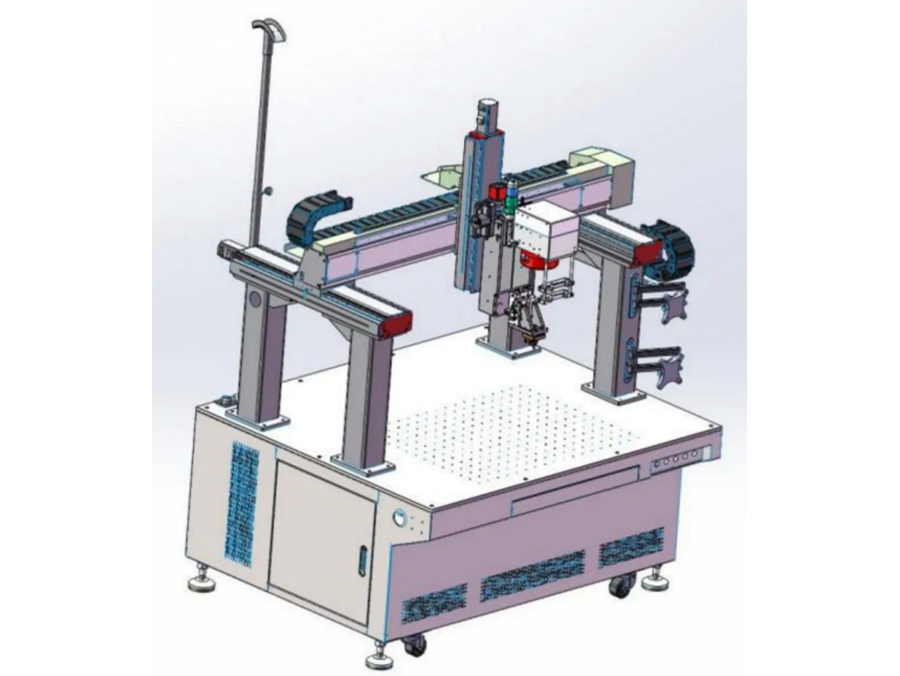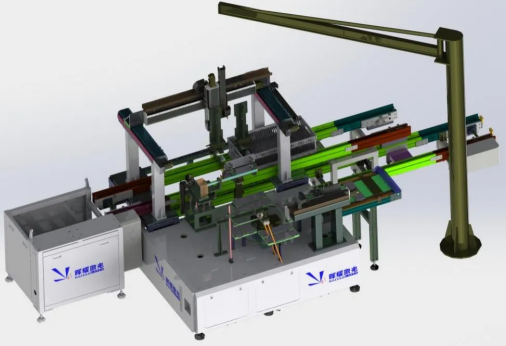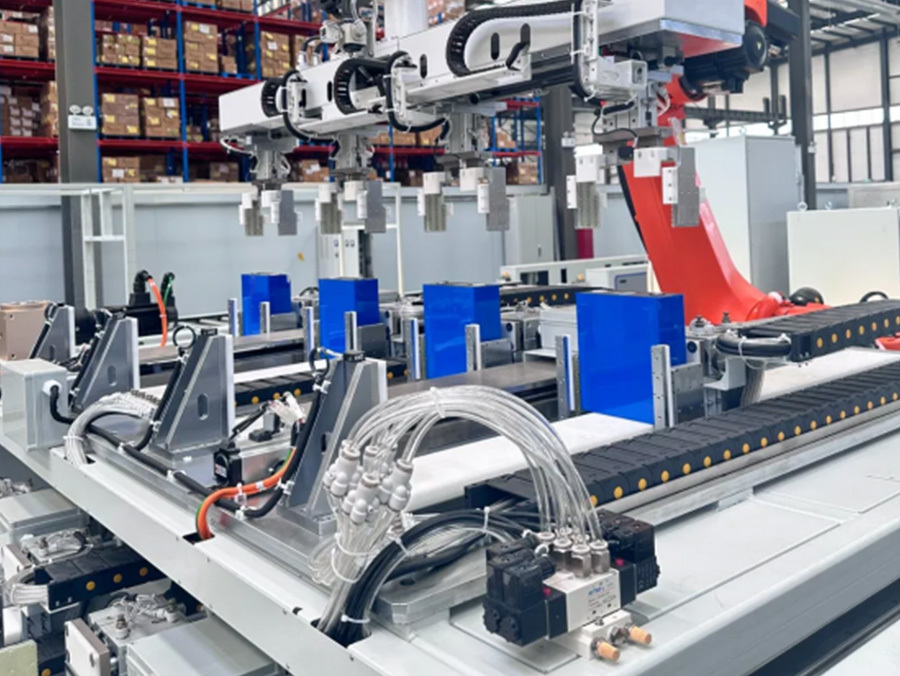Solution

EV Battery Module PACK Performance Testing Cabinet
- Product description
-
- Commodity name: EV Battery Module PACK Performance Testing Cabinet
- Commodity ID: 动力电池模组PACK性能测试柜
The Battery Module PACK Performance Testing Cabinet is designed to evaluate the performance of battery modules and PACKs under simulated operating conditions.
1. Equipment Overview
The Battery Module PACK Performance Testing Cabinet is designed to evaluate the performance of battery modules and PACKs under simulated operating conditions. This equipment measures critical parameters such as voltage, current, capacity, internal resistance, and thermal behavior. It is essential for quality assurance in EV battery production, energy storage systems (ESS), and advanced R&D applications.
2. Key Features
- Comprehensive Testing: Supports electrical, thermal, and cycle performance evaluation.
- High Precision: Accurate measurements of voltage, current, and capacity.
- Dynamic Load Simulation: Customizable charge-discharge profiles to replicate real-world conditions.
- Real-Time Monitoring: Continuous data acquisition and visualization.
- Scalability: Configurable for various module and PACK sizes.
3. Technical Specifications
3.1 Electrical Performance Testing
- Voltage Range: 0–1,000 V DC.
- Voltage Accuracy: ±0.05%.
- Current Range: 0–300 A (customizable for higher currents).
- Current Accuracy: ±0.1%.
- Capacity Measurement:
- Range: 10 Ah–500 Ah.
- Accuracy: ±0.2%.
- Internal Resistance Measurement:
- Range: 0.1 mΩ–1 Ω.
- Accuracy: ±0.5%.
3.2 Dynamic Testing
- Load Simulation: Variable load profiles for real-world performance testing.
- Cycle Testing: Programmable charge-discharge cycles (up to 10,000 cycles).
- Data Logging: Voltage, current, capacity, energy, and temperature recorded in real time.
- Cycle Time Accuracy: ±0.1%.
3.3 Thermal Management
- Temperature Range: -10°C to 80°C (with optional integrated chamber).
- Temperature Accuracy: ±1°C.
- Thermal Monitoring: Sensors for real-time thermal data acquisition.
- Cooling and Heating: Integrated systems for precise thermal control.
3.4 Mechanical Design
- Cabinet Configuration:
- Modular layout with multiple chambers for parallel testing.
- Adjustable fixtures to accommodate various module and PACK sizes.
- Capacity: Up to 16 modules/PACKs per cabinet.
- Dimensions:
- Length: 2,000–4,000 mm (customizable).
- Width: 1,200–2,000 mm.
- Height: 2,000 mm.
- Weight: 2,000–5,000 kg (depends on configuration).
3.5 Software and Control
- Control Interface:
- 15-inch touchscreen HMI with an intuitive user interface.
- Multi-language support (English, Chinese, etc.).
- Test Programming: Configurable test parameters and custom profiles.
- Data Analysis:
- Real-time graphing and historical trend analysis.
- Export formats: CSV, Excel, PDF.
- Cloud storage and IoT compatibility for remote monitoring.
- Connectivity: Ethernet, USB, and Wi-Fi options.
3.6 Safety Features
- Overvoltage and Overcurrent Protection: Ensures equipment and battery safety.
- Short-Circuit Detection: Automatic shutdown upon fault detection.
- Emergency Stop: Manual shutdown button for operator safety.
- Environmental Monitoring: Sensors for smoke, temperature, and humidity detection.
- Certifications: CE, UL, ISO 9001 compliant.
3.7 Electrical Specifications
- Power Supply: AC 380V ±10%, 50/60 Hz, 3-phase.
- Maximum Power Consumption: Up to 50 kW (depends on configuration).
- Control Voltage: 24V DC for internal systems.
3.8 Environmental Requirements
- Operating Temperature: 10–35°C.
- Humidity: ≤60% RH (non-condensing).
- Ventilation: Integrated cooling and airflow systems.
4. Applications
- EV Battery Testing: Performance evaluation of modules and PACKs in electric vehicles.
- Energy Storage Systems (ESS): Reliability testing for grid-scale applications.
- Consumer Electronics: Performance validation for battery modules in portable devices.
- R&D and Quality Assurance: Verification of design and manufacturing consistency.
5. Maintenance and Warranty
- Maintenance Schedule:
- Weekly: Inspect connectors, fixtures, and sensors.
- Monthly: Calibrate voltage, current, and thermal systems.
- Annually: Perform comprehensive diagnostics and software updates.
- Warranty Period:
- Standard: 12 months.
- Extended: Available on request.
Key words:
EV Battery Module PACK Performance Testing Cabinet
Series of Products
Huiyao Laser is a leading battery laser welding machine manufacturer offering professional battery pack and battery module welding solutions for many fields, such as energy storage systems of research and development machines, as well as complete assembly lines for module and battery pack production.
Comprehensive Pouch Battery Module PACK Automatic Production Line for Efficient Output 12PPM is designed for the modular production of solid-state batteries, featuring high automation, flexibility, and integrated quality control (QC) systems. It ensures efficient production while maintaining strict quality standards. The line is suitable for electric vehicles, energy storage systems, consumer electronics, and more, supporting the production of various specifications of solid-state battery modules.
Comprehensive Pouch Battery Module PACK Automatic Production Line for Efficient Output 12PPM is designed for the modular production of solid-state batteries, featuring high automation, flexibility, and integrated quality control (QC) systems. It ensures efficient production while maintaining strict quality standards. The line is suitable for electric vehicles, energy storage systems, consumer electronics, and more, supporting the production of various specifications of solid-state battery modules.
Huiyao Laser Fully-Automated Energy Storage Prismatic Battery Module PACK Line
Huiyao Laser Energy Storage Automatic Prismatic Battery Module PACK Line is an efficient, intelligent and customized automated production line, specifically designed for the energy storage field. It is suitable for application scenarios such as large - scale energy storage systems, home energy storage, and industrial energy storage. This production line integrates advanced laser welding technology, automated assembly systems, and intelligent detection equipment, aiming to provide customers with the production of battery modules with high consistency and high reliability.
Get a Free Quote
PLEASE LEAVE YOUR MESSAGE AND WE WILL CONTACT YOU AS SOON AS WE RECEIVE IT!
FAQ
Q
How do you ensure consistent weld quality in the assembly of Prismatic battery packs?
A
Q
What are the best practices for cell alignment and stacking in a Prismatic battery PACK assembly?
A
Copyright © Huiyao Laser Technology (Luoyang) Co., Ltd. Has supported ipv6




